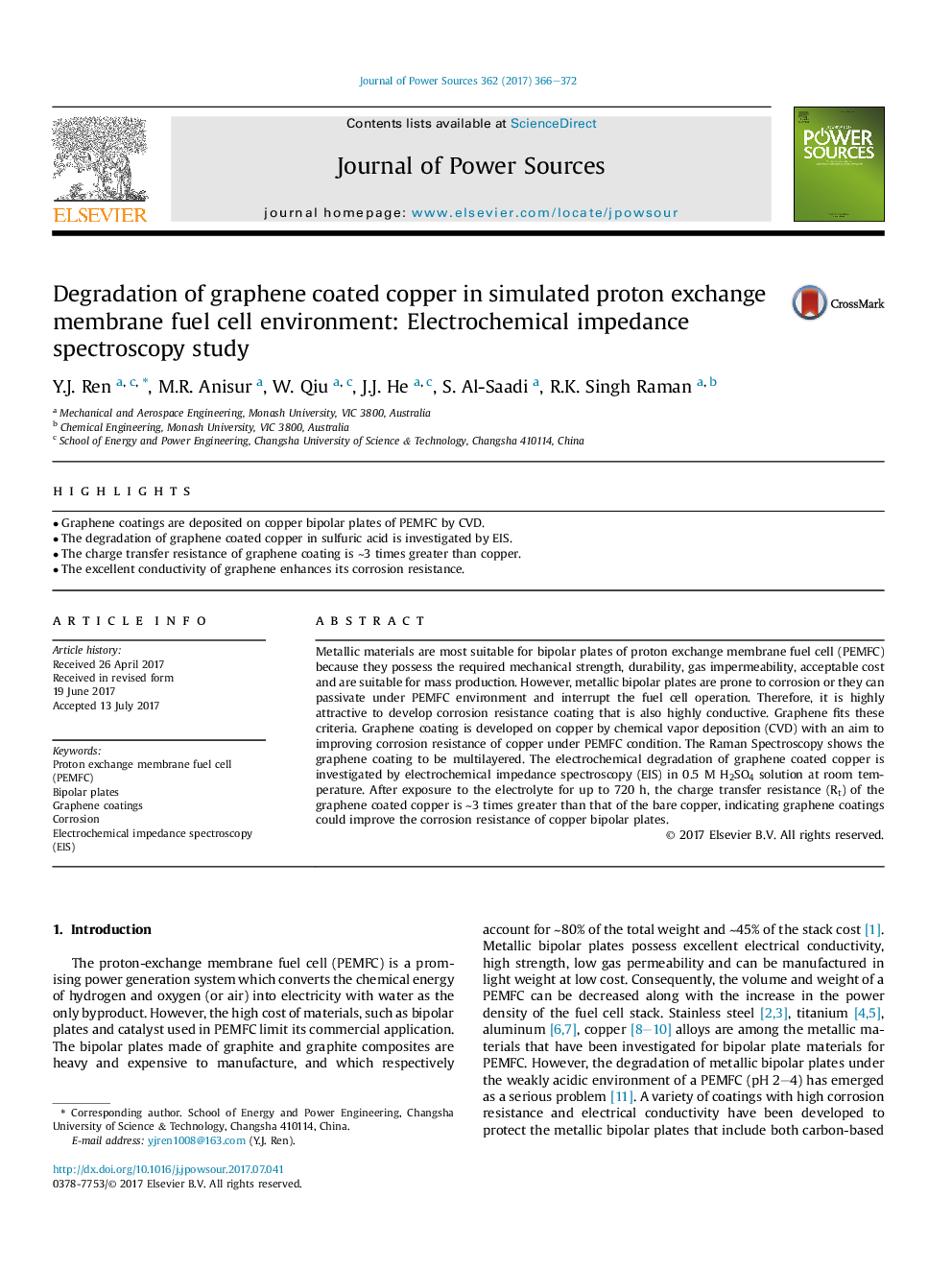| Article ID | Journal | Published Year | Pages | File Type |
|---|---|---|---|---|
| 5148841 | Journal of Power Sources | 2017 | 7 Pages |
Abstract
Metallic materials are most suitable for bipolar plates of proton exchange membrane fuel cell (PEMFC) because they possess the required mechanical strength, durability, gas impermeability, acceptable cost and are suitable for mass production. However, metallic bipolar plates are prone to corrosion or they can passivate under PEMFC environment and interrupt the fuel cell operation. Therefore, it is highly attractive to develop corrosion resistance coating that is also highly conductive. Graphene fits these criteria. Graphene coating is developed on copper by chemical vapor deposition (CVD) with an aim to improving corrosion resistance of copper under PEMFC condition. The Raman Spectroscopy shows the graphene coating to be multilayered. The electrochemical degradation of graphene coated copper is investigated by electrochemical impedance spectroscopy (EIS) in 0.5Â MÂ H2SO4 solution at room temperature. After exposure to the electrolyte for up to 720Â h, the charge transfer resistance (Rt) of the graphene coated copper is â¼3 times greater than that of the bare copper, indicating graphene coatings could improve the corrosion resistance of copper bipolar plates.
Keywords
Related Topics
Physical Sciences and Engineering
Chemistry
Electrochemistry
Authors
Y.J. Ren, M.R. Anisur, W. Qiu, J.J. He, S. Al-Saadi, R.K. Singh Raman,
